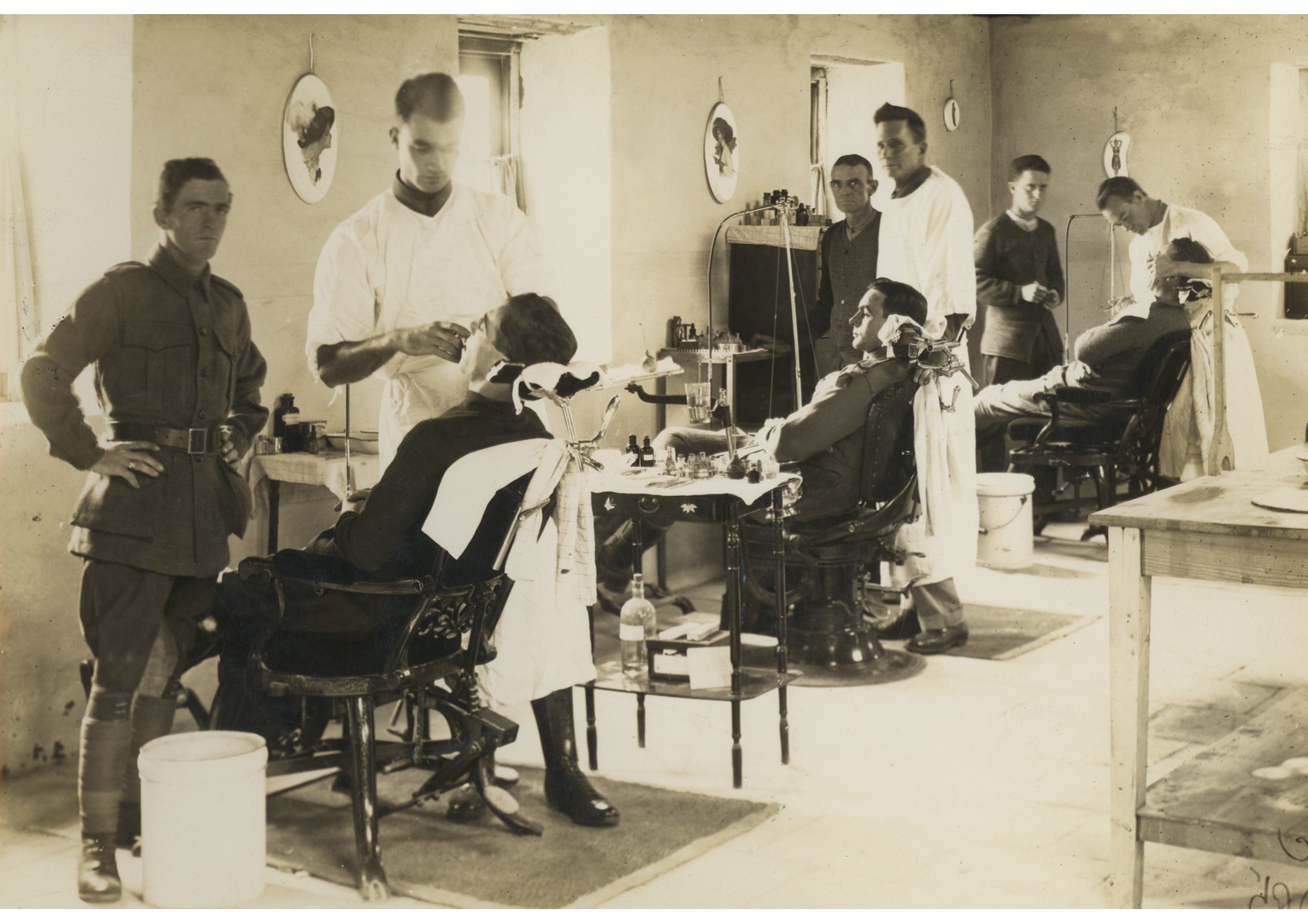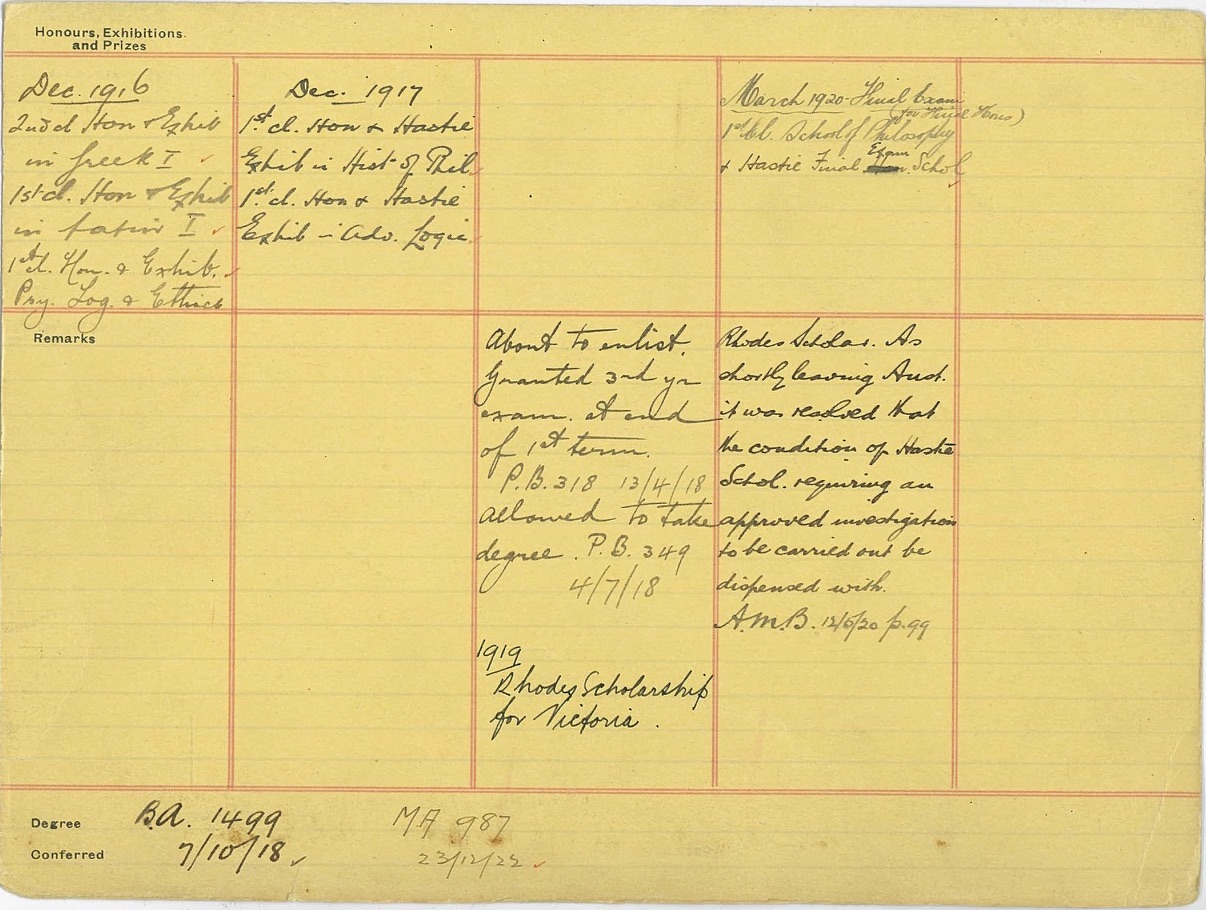
After the fighting: The soldiers who studied

After WW1, returning soldiers faced the question of ‘what next’? University study was the answer for some
Published 8 November 2018
November 11, 2018 marks 100 years since the end of fighting in WWI, and I have been thinking about my forebears who took part. My grandfather, a ‘junior teacher’ enlisted at the age of 20, saw action at Gallipoli, in France and with the Dunsterforce in Persia.
He returned decorated with a Military Cross and Military Medal, and forever changed. Like all who returned, he faced the question of ‘what next?’.

Many service personnel went back to their lives before the war – their families, communities and employment – and carried their war experiences within.
Others, more obviously injured, faced years of treatment and rehabilitation. A few took up new opportunities on the land as part of the Soldier Settlement scheme. And university numbers swelled as returned soldiers took advantage of a scheme to reduce fees by 50 per cent offered by the Repatriation Commission.

At the University of Melbourne, for example, of the returned soldiers studying engineering in 1922, over half began their studies after the war.
In 1922 reports on the scheme to University Registrar, the Dean of the Faculty of Arts Ernest Scott (later Sir Ernest) made particular mention of how returning students were ‘ripened’ by their war service and noted their ‘maturity of thought and character’.
Similarly, Alfred Ewart, Dean of Science, considered that the soldier students showed ‘great earnestness in their work’ and provided a ‘steadying influence’ on their cohort.
Many returned soldiers were admitted to the University without matriculation if their prior education indicated they could work at a higher level. One of these was (James) Alfred Nattrass, who had been licensed to practice dentistry in 1911.
Mr Nattrass joined the Australian Army Medical Corps reserve of dentists that was established in 1915, and to meet the demand for medical personnel, was deployed with the Dental Corps in 1918 at the age of 38.
When he returned to Australia he enrolled at the University of Melbourne, graduating with a Bachelor of Dentistry Science in 1920. Mr Nattrass set up his dental practice in North Melbourne.

The funding scheme encouraged men who had lower levels of qualification to undertake further study. Those who had done a training course in motor engineering or other practical skills in the Education Service of the army, or studied at British colleges and universities while awaiting repatriation, were also allowed credit. For some, that wait was until the end of 1919.
Returned soldiers who had been attending the University of Melbourne when they enlisted were welcomed back, given credit for work they had already done and allowances were made for incomplete years and in examinations of subjects they had begun, but not completed.
Some concessions were granted to new students too. In arts and sciences, soldier students were credited with one subject. In Arts, the subject usually chosen for remission was generally for a language other than English; however Scott noted that few soldier students returned from the war without a knowledge of French.
The academic achievements of soldier students varied, with all Deans noting better results from those who had been students prior to the war. Harrison Moore, Dean of Law, commented that though some had done very well, it may have been in the men’s best interests to have been ‘more strict’ in entrance requirements for those who had not been enrolled before the war.
In his report to the Registrar, Professor Scott noted that Rhodes Scholars and prize winners were amongst the soldier students in Arts – Samuel Clement Lazarus (later known as Samuel Leslie) was one of these.


Like many young men, when he reached 18 Mr Lazarus abandoned his study and enlisted. The Australian National Archives holds his war record, which includes a statement of his birth date provided by the Registrar of the University of Melbourne.
Samuel Lazarus was still training in Broadmeadows when the war ended, returning to university without seeing action. After graduating with several honours, he pursued a distinguished career as a writer and civil servant in Britain.
And what of my grandfather? Though (William) Frank Lord escaped death, nearly 62,000 Australians had lost their lives in the war. He had probably killed other young men like himself. He had seen parts of the world very different from his beloved Victoria – Egypt, France, Turkey, Persia - and he had become a decisive leader of men.

After the war he returned to teaching, married and tried to settle into what had once been normal life, but he was restless. He took up a place at the University of Melbourne in 1924, and like other returned soldiers, was excused the requirement to learn a language other than English. Graduating with a Bachelor of Arts Diploma of Education, he worked in a number of schools including Paynesville, Merino and Malvern before becoming a teacher of teachers in 1937, at Melbourne Teachers College.
He enlisted again in 1939 and spent most of the war training troops in Australia. Following the war, he was appointed Principal of Ballarat Teacher’s College from 1946 to 1950, before becoming Toorak Teachers’ College’s first Principal in 1951, retiring from that role in 1959.
Proud to have served his country, Frank Lord never missed an ANZAC day service. And every year on November 11, would stop at 11am to remember those who did not return, and reflect.
The University of Melbourne Archives is one of Australia’s largest research archives.
Banner image: Peace celebrations in Spring Street, Melbourne, 1919. Picture: Australian War Memorial
